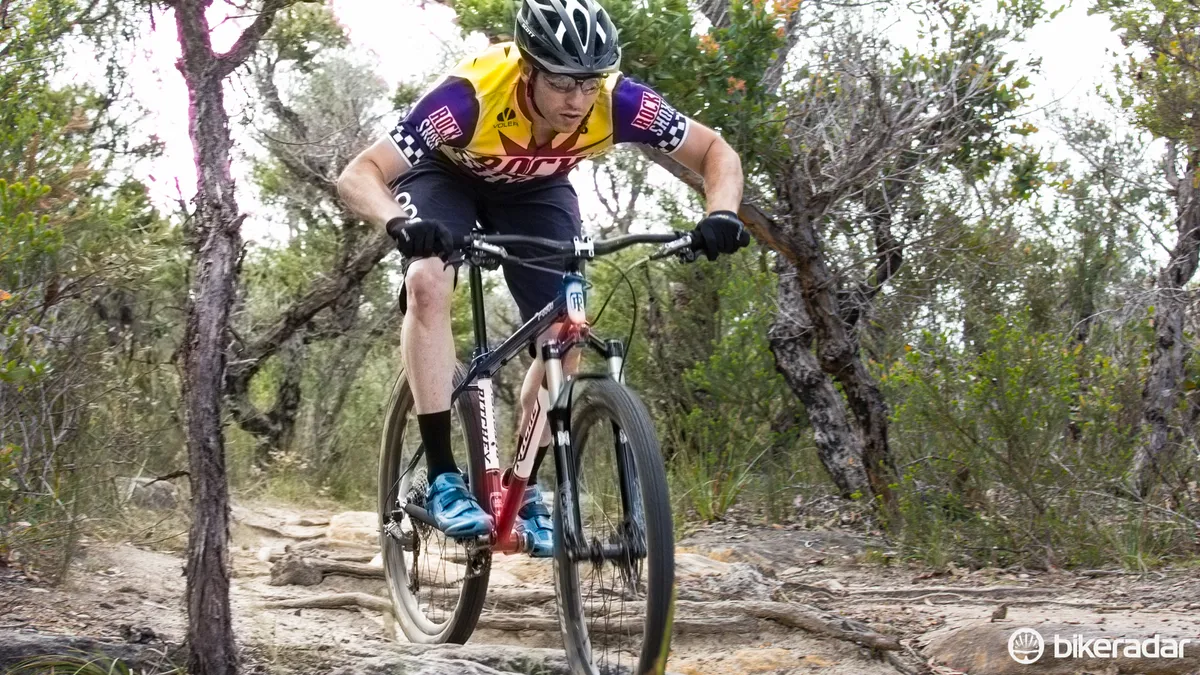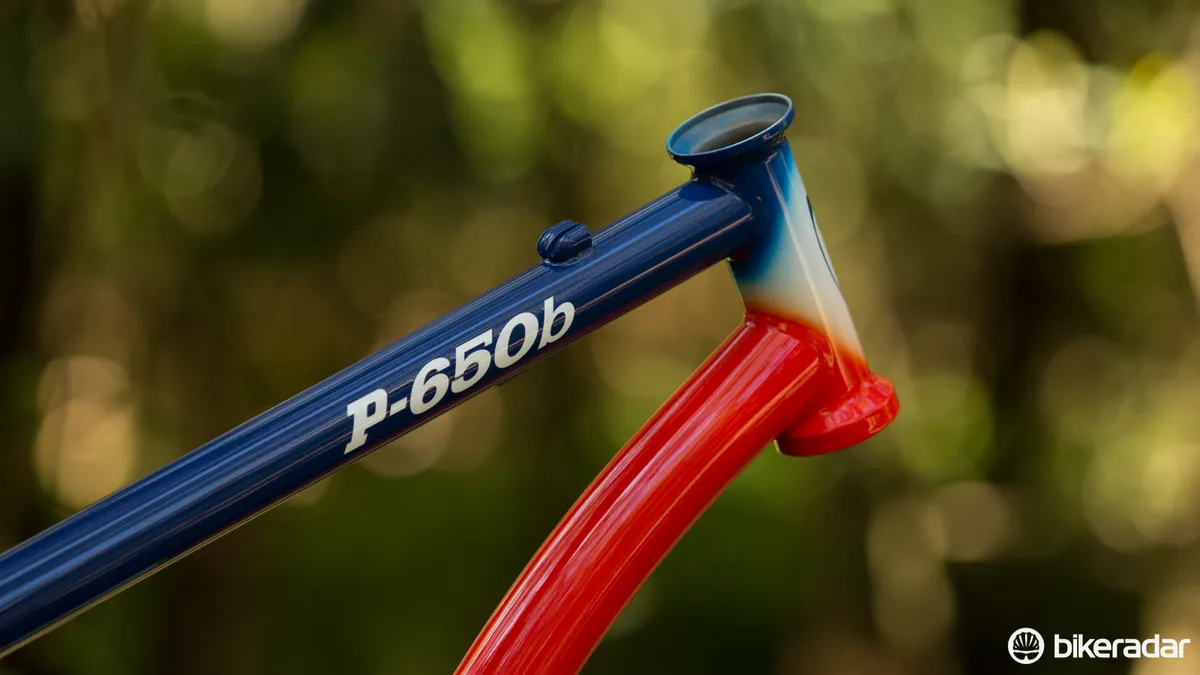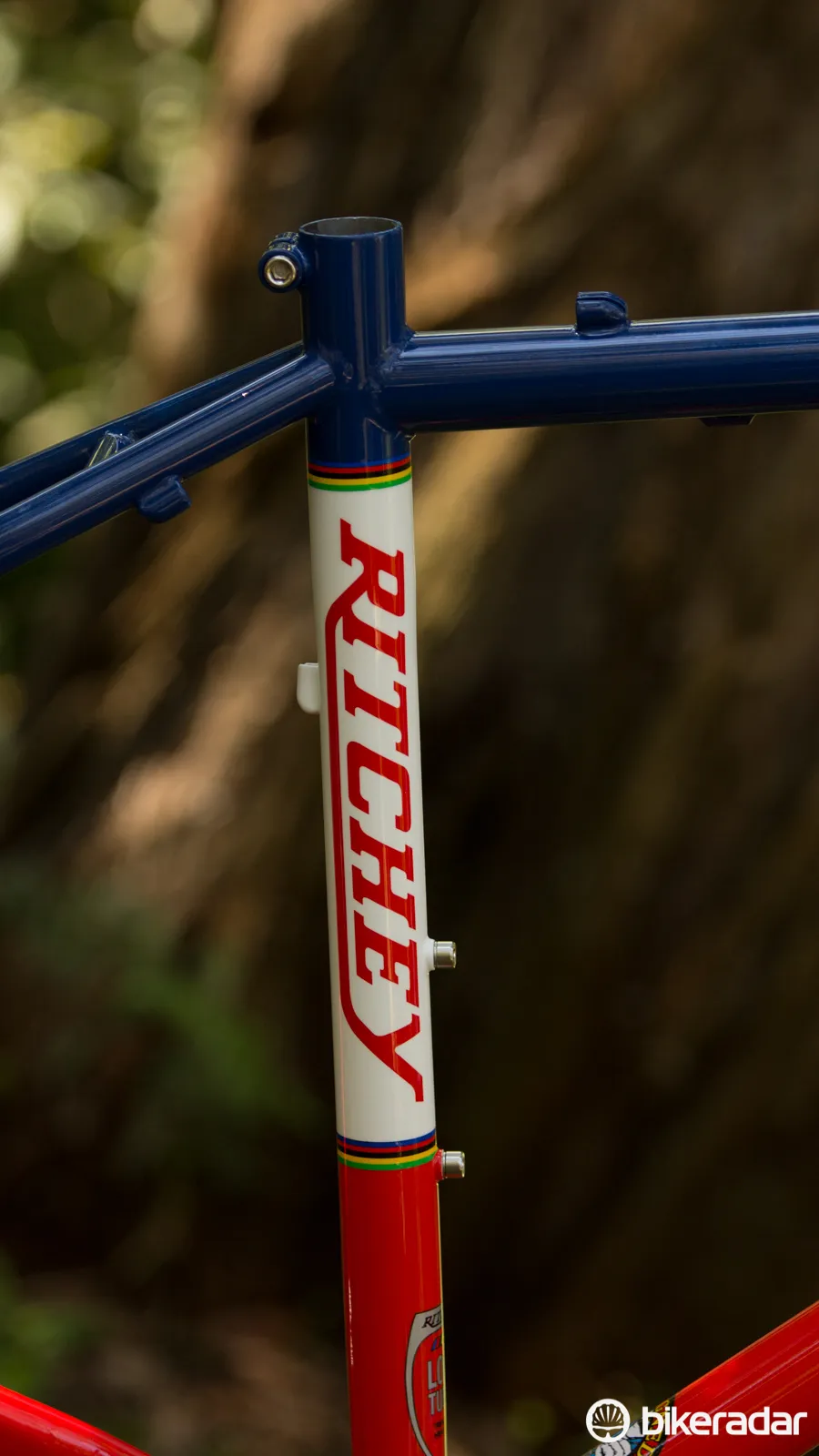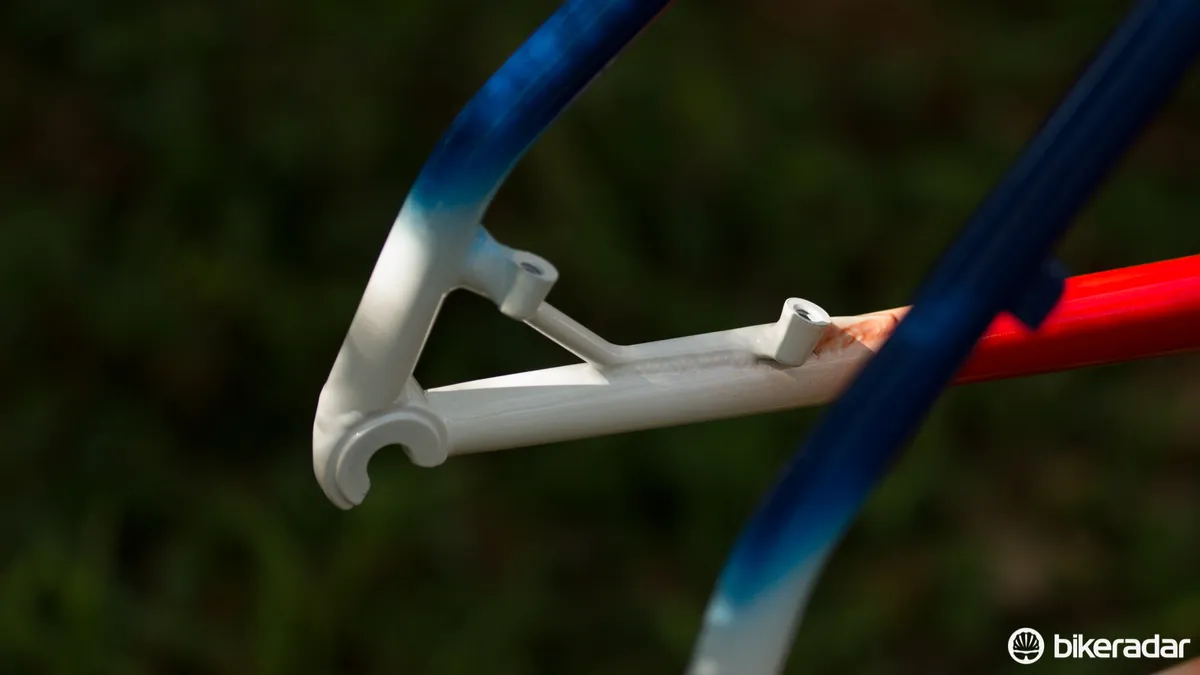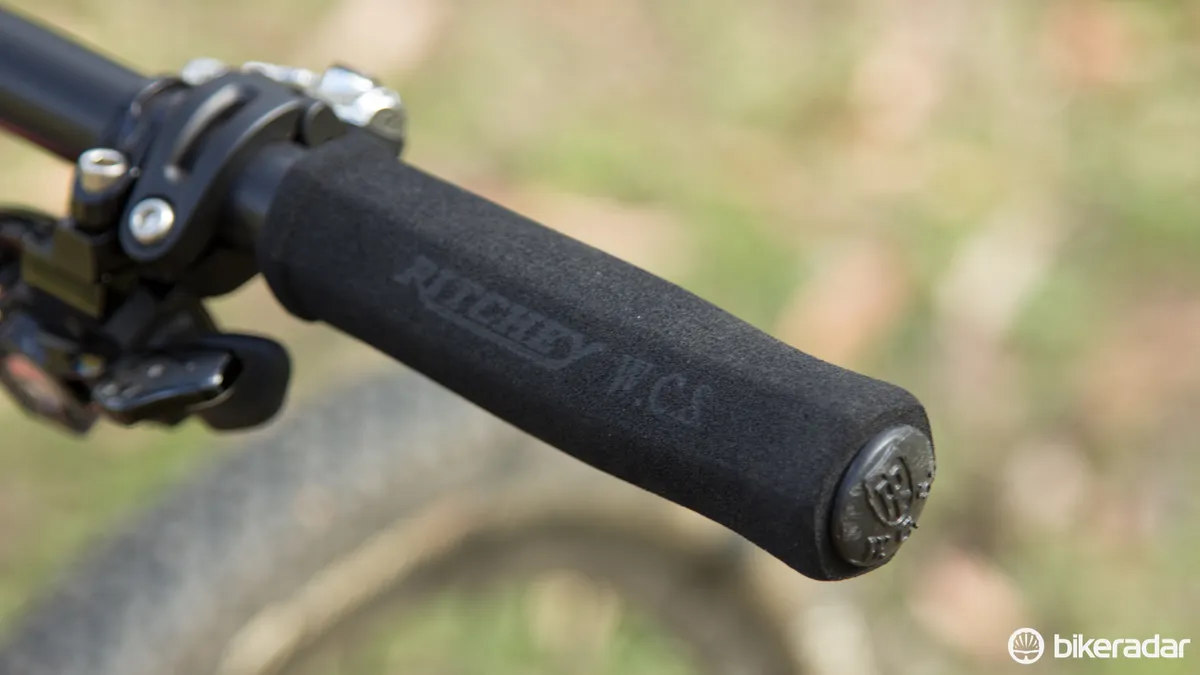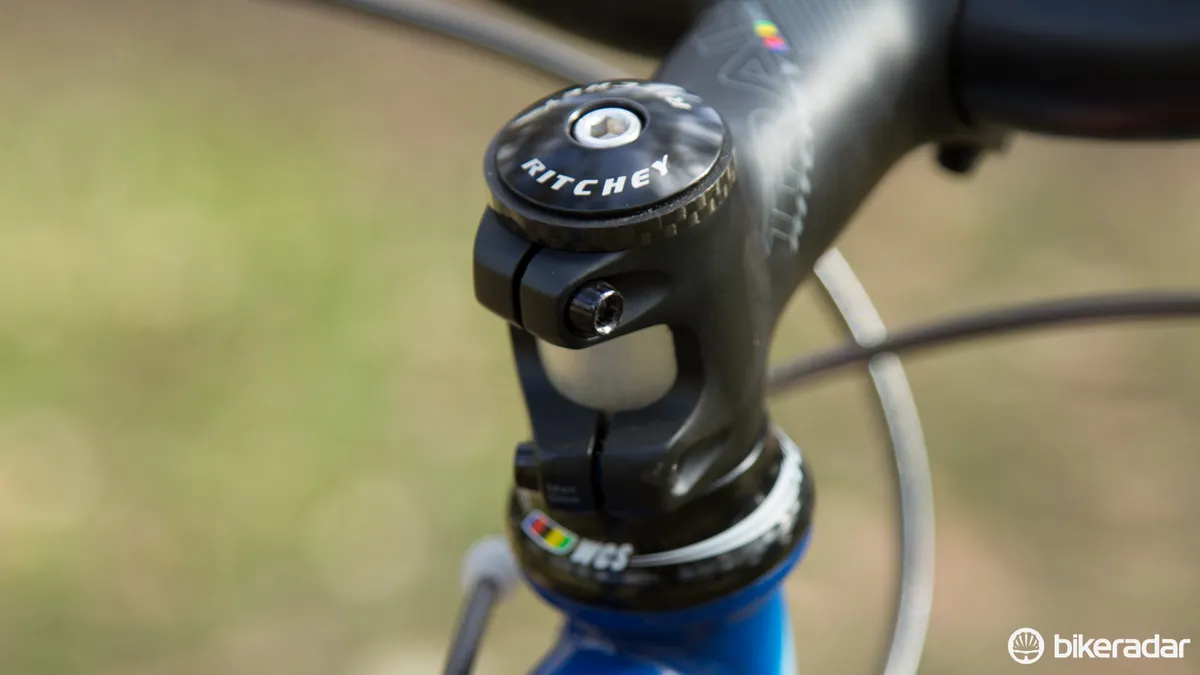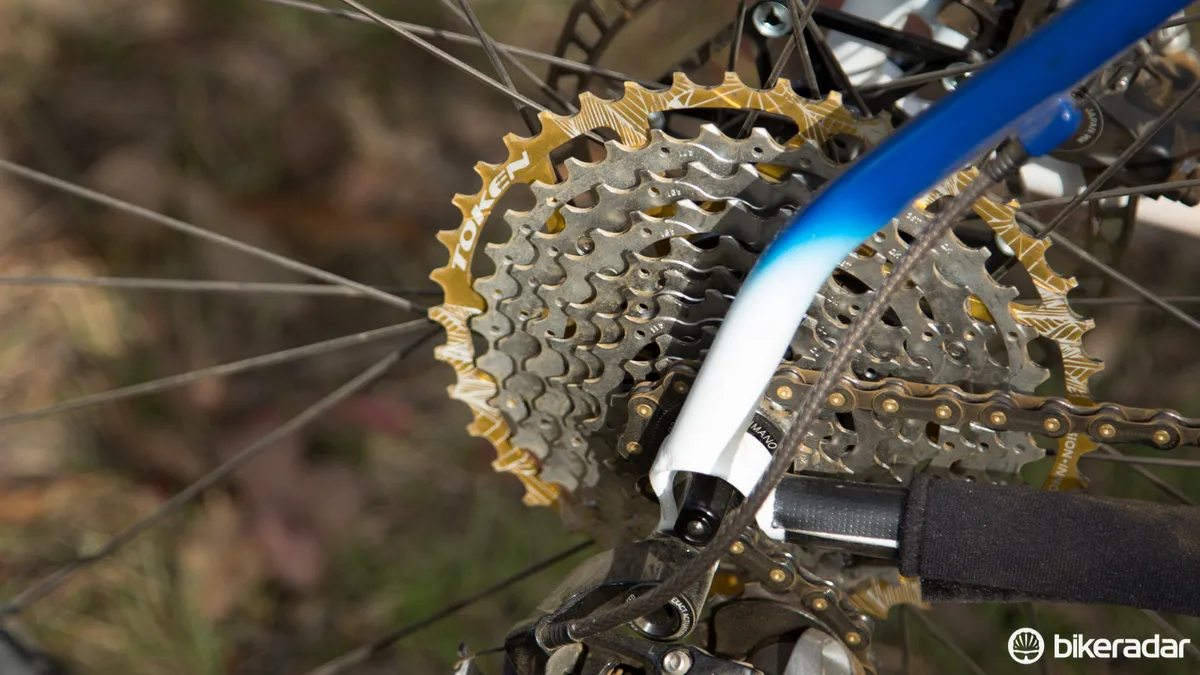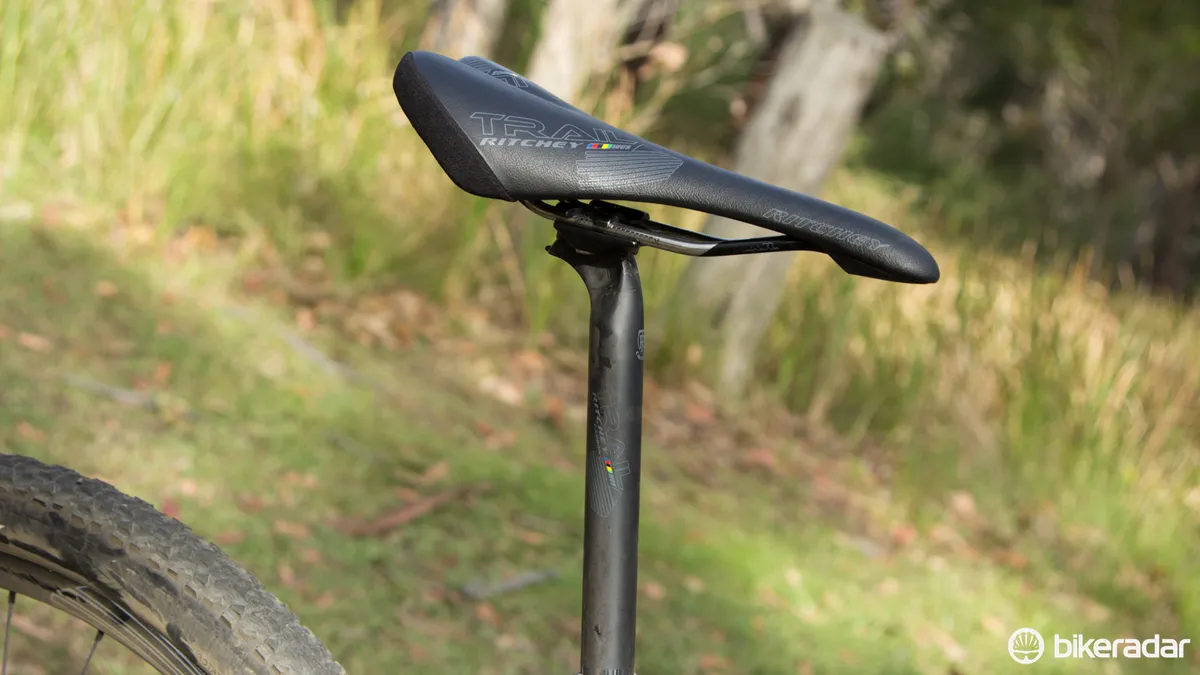During our testing of Ritchey's P-650b frame, we constantly heard comments along the lines of: “It looks old, yet new – what is it?”
For the passionate mountain biker, the colours and lines of this frame will likely raise your pulse. If you’re newer to the sport, the man behind the brand – Tom Ritchey – has been involved in the development of the mountain bike from the very beginning. Along with his own frames, Ritchey once made frames for a small company named MountainBikes, run by Gary Fisher and Charlie Kelly.

The man and the mo...
This is the second generation 650b equipped frame for Ritchey, with the first created back in 1977. At the time, sources for appropriate tyres dried up and Ritchey was forced to move onto using the readily available 26in wheels.
Frame: fuss-free elegance
The new-model Ritchey, much like some other recent steel frame offerings, is about getting back to mountain biking's roots and escaping the latest technology that we so often get caught up in (guilty as charged). The lines are fuss-free and there are no apologies for such ‘old’ features as the 68mm threaded bottom bracket and 28.6mm front derailleur clamp or lack of a rear thru-axle and dropper-seatpost compatibility.
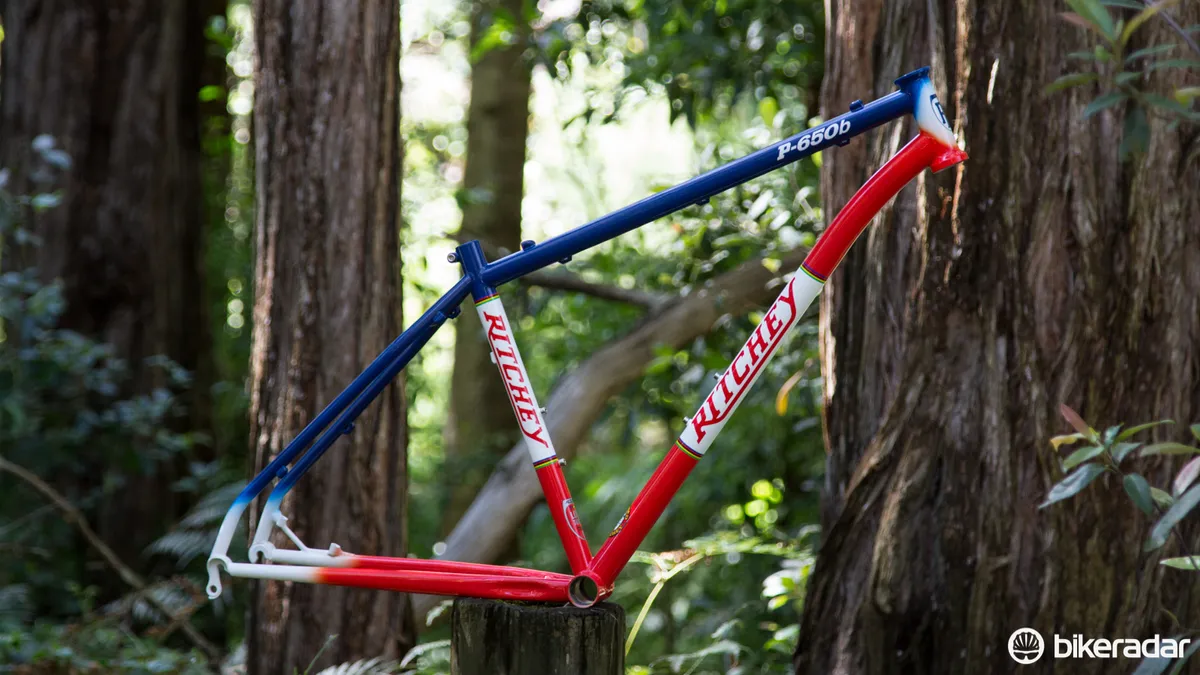
The P-650b is a classic looking chassis
Made solely of cromoly steel, the Ritchey has classical thin tubing, with smooth bends in the right places and held together by clean welds. This creates a traditional aesthetic that isn’t often seen on the trails today (excluding the occasional sight of frames from custom builders).
We weighed our bare medium 17in sample frame at 2028g. From this alone, you know this isn’t designed as a hardtail to compete with the latest offerings in either carbon or alloy. With the right components you can still build a competitively weighted bike, but it’s never going to set any records.
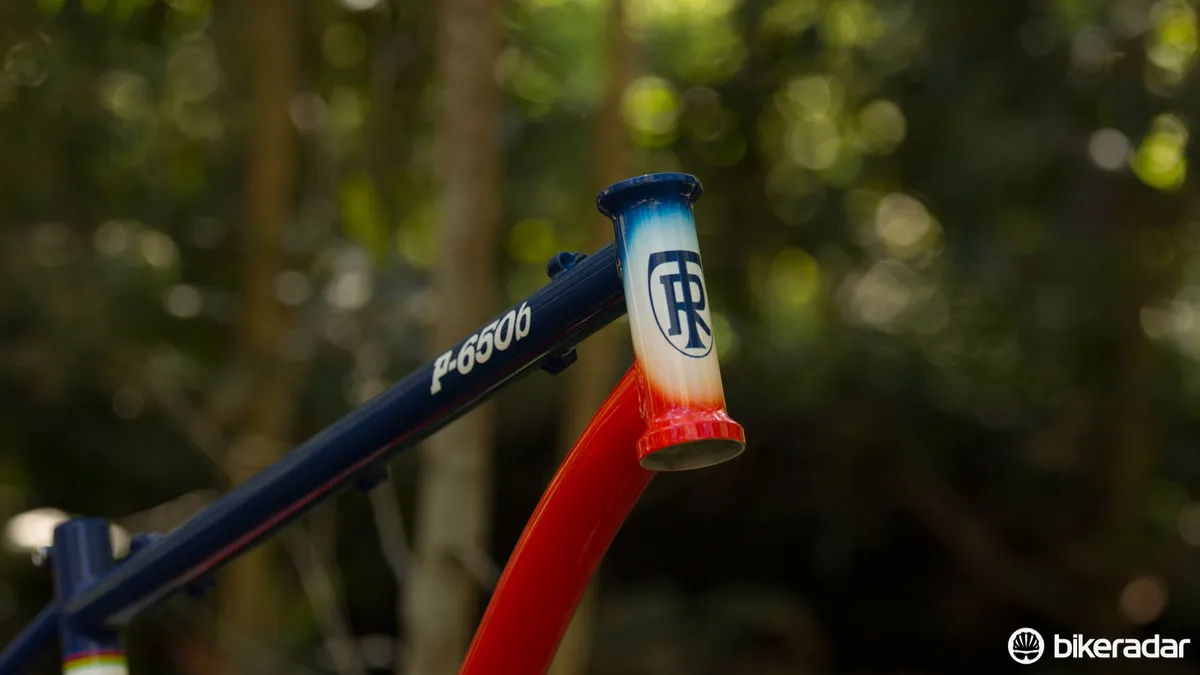
Slightly unusually for such a classic-looking frame, the head tube is ready to accept an integrated headset
The down tube, designed for use with a 100mm suspension fork, cleanly curves behind the head tube to allow clearance of the fork crown. Holding the 1 1/8in fork steerer in place, that forged and machined head tube uses an easily serviced integrated Campy-type headset.
The 68mm English threaded bottom bracket and 28.6mm band clamp front derailleur are two features you won’t see on many modern bikes. But these classic inclusions were the norm just a handful of years ago and are still well catered for with new components.
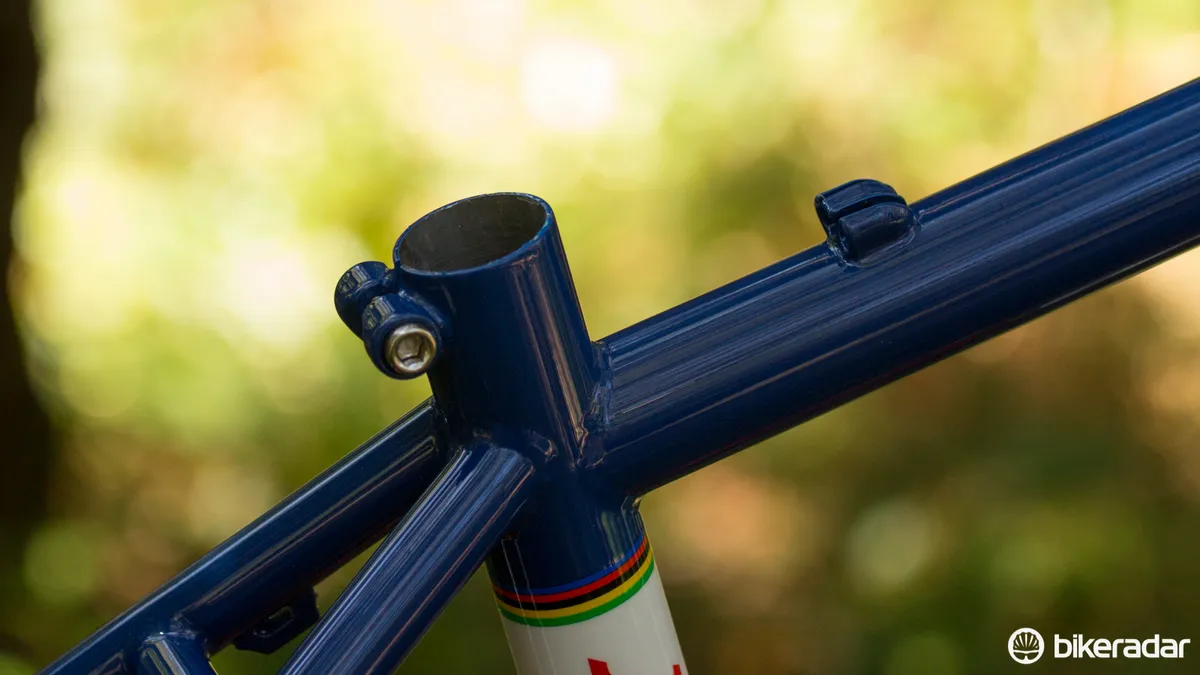
A common sight on older steel frames, the integrated seatclamp is a neat touch
An integrated seat clamp holds a 27.2mm seat post firmly in place, with the skinny diameter allowing a little flex to complement the frame.
Ritchey has stuck with open cable runs for the front and rear derailleurs. It’s something that has lost popularity in the past few years to guided full-length housing, but remains the lightest and lowest friction option when new.
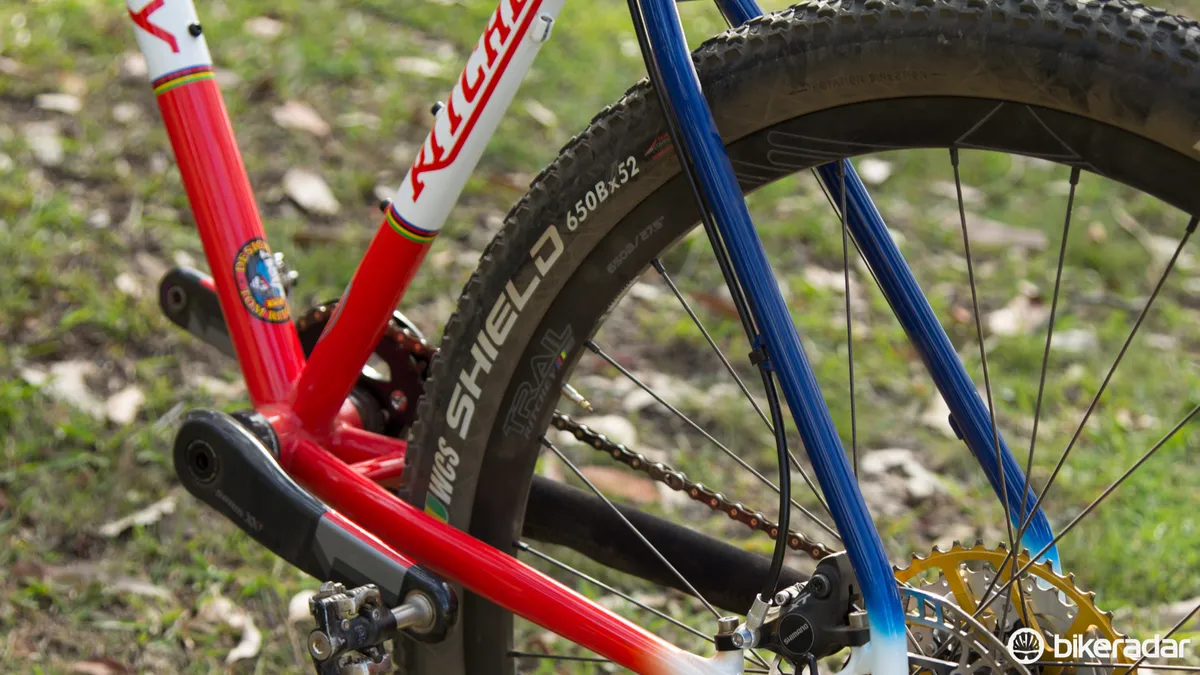
Tyre clearance is reasonable but not overly generous. Just ensure that your rear brake features a swivel banjo-type hose fitting
Next to the forged rear dropouts sits the brake mount, cleanly tucked within the rear triangle. Cheaper brakes without a banjo-type hose connection will likely suffer from awkward bends to reach the seatstay hose routing. Keep this in mind, as you’ll likely need at least a Shimano SLX, SRAM Guide or equivalent brake.
For 2015, the frame remains most unchanged with the exception of a tapered head tube and new paint scheme. While we prefer the Ritchey race team paint scheme of our 2014 version, the inclusion of a tapered head tube will expand your front fork options.
Equipment: a mishmash of parts combine to conjure the Ritchey as it should be

Our sample was built with a range of Ritchey WCS Trail gea, the full bike as pictured weighed 10.65kg (23.43lb)
Sold frame-only, our sample was built with parts from Ritchey’s Australian distributor, so a spattering of Ritchey componentry is to be expected. The rest of the build gets a little more ‘bitser’, with a SRAM 1X10 drivetrain mixing with a few components from Token to prove it’s no off-the-shelf build.
Up front sits an X-Fusion Velvet R2R 110mm fork, a sneaky 10mm longer than the recommended travel length.
In a way, our tester was a perfect example of how the Ritchey frame should be built – with your finest spares. Many of us have those parts that are waiting for that ‘next project’ (perhaps with the exception of 650b wheels), and the Ritchey’s affordable frame-only price and old-standards compatibility makes it well placed for just that.
Ride and handling: modern geometry hidden behind classic paint
On the trail, the old looks are transformed into a modern trail bike-like ride with a confident and balanced manner in general cross country riding and medium-technical terrain.
With our sample bike built with a slightly longer than suggested 110mm X-Fusion fork and low riser handlebar, our position was comfortable, if not a little upright.
Taking into account the stock 70-degree head angle, the marginally taller fork helps to rake out the front a tad. This provides an aggressive position for tackling steep descents, and along with a short rear-end makes for a slight rear bias that made lofting the front wheel a breeze.

A lower bar height would help on the climbs
The somewhat taller handlebar height means climbs require more focus and a steady hand to stop the front end from wandering, although it’s a trade-off many will appreciate given the ride back down the hill. If the frame was ours to keep, we would fit a flat handlebar and even a lower headset topcap to lower the front-end.
It’s common to hear people remark about the ride quality of a good steel frame, and on this score the Ritchey delivers without question. While not the softest steel frame we’ve ridden, it has an obvious ‘give’ which helps to absorb the sting of the trail and hands you a little spring off of rocks, roots and jumps.
The flipside of this is a lack of all-out frame stiffness. While we never felt the stiffness was an issue or negative trait on the trail, it’s certainly worth noting that the discerning watt-counting (as well as gram counting) racer will likely prefer the zippier ride given from a plastic-fantastic machine. But then, the purchaser of this frame is unlikely to be someone who cares above all about the latest stiffness to weight ratio figures, or even besting that local Strava segment.
There’s absolutely no denying the element of old-school style that comes with this frame – and it’s likely to come out in your riding. On top of giving new life to our oldest riding jerseys, we found ourselves sticking our feet out and tripoding around corners just for the sake of it.
Though it’s not the very best at anything, this chassis is about getting back to what got us started – as well as nodding to Ritchey’s history – not worrying over the latest technology.
